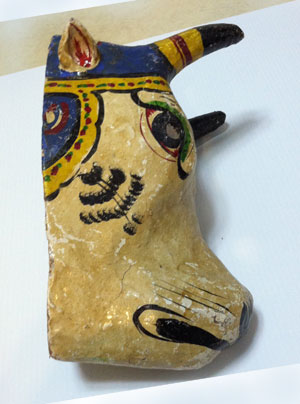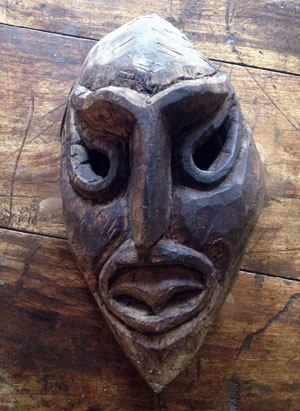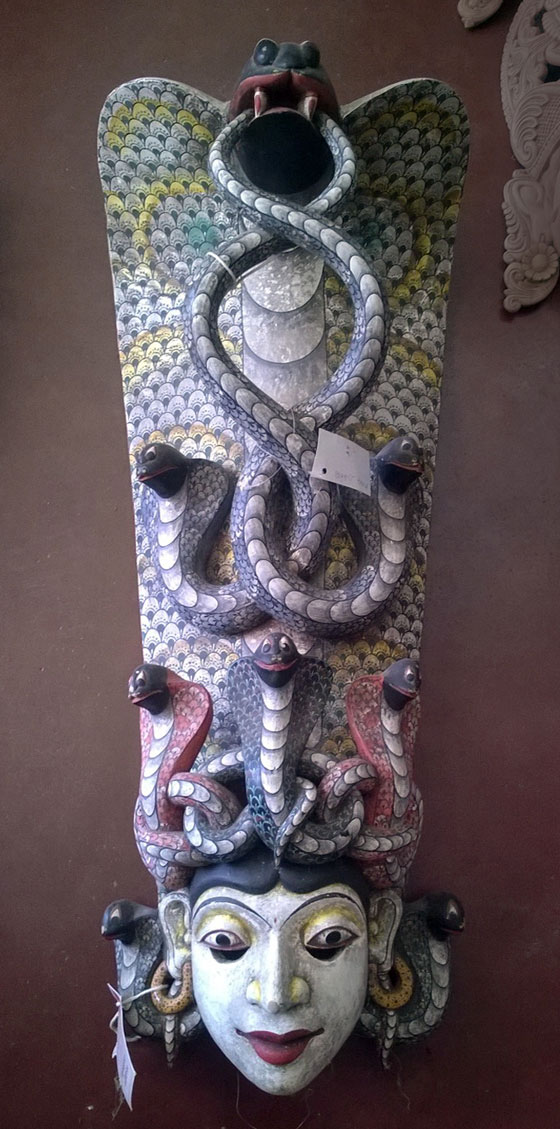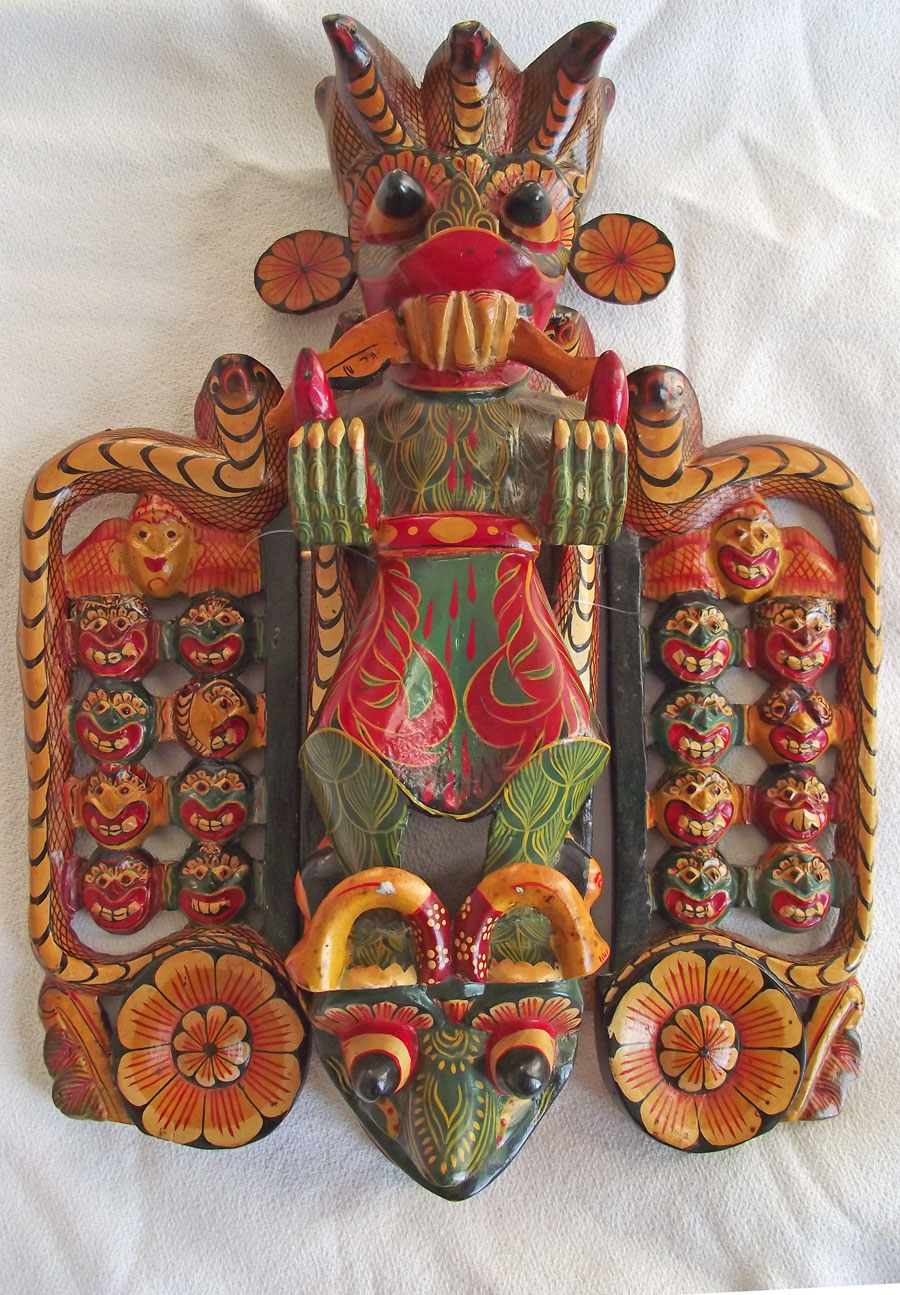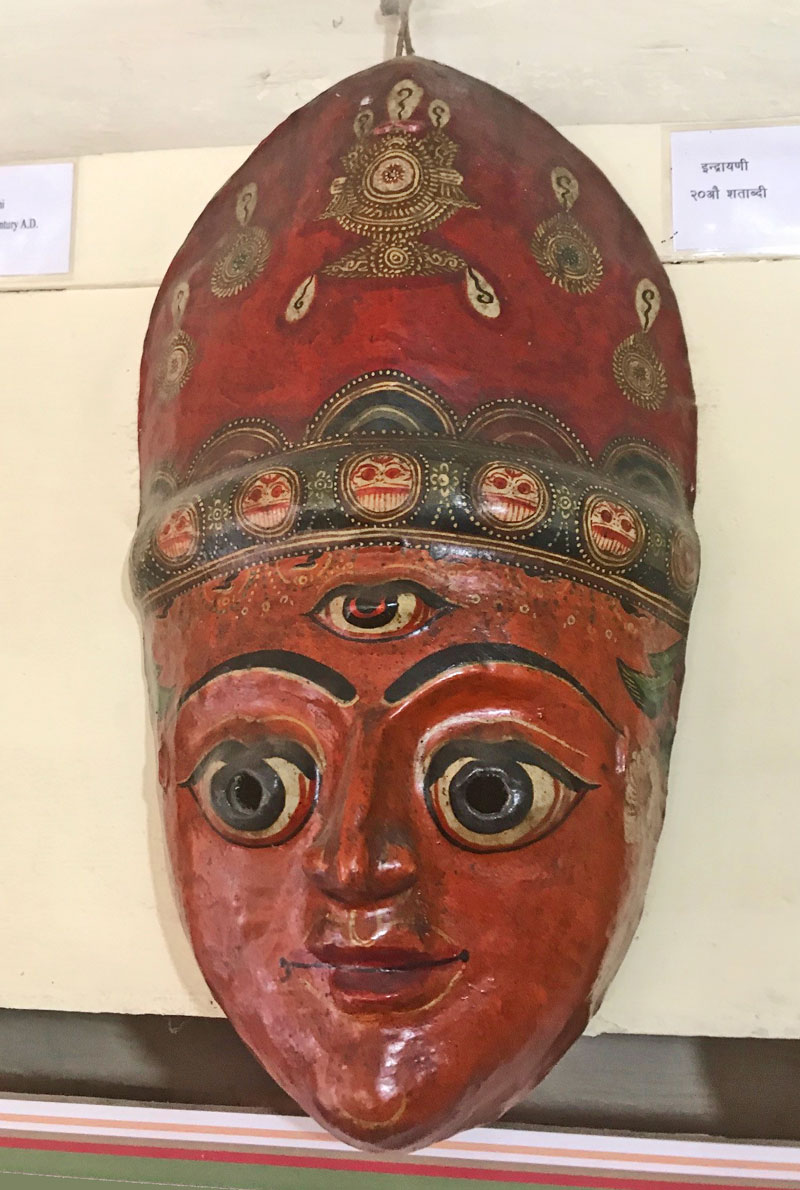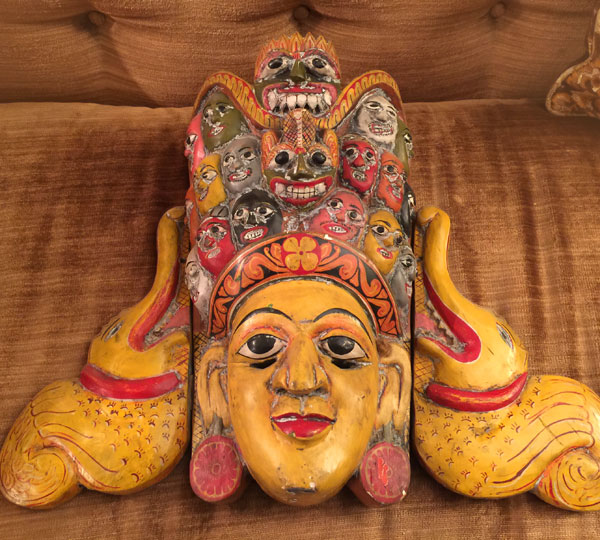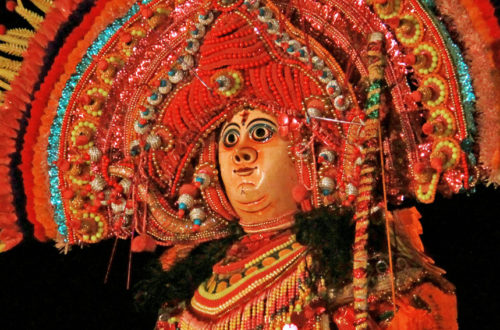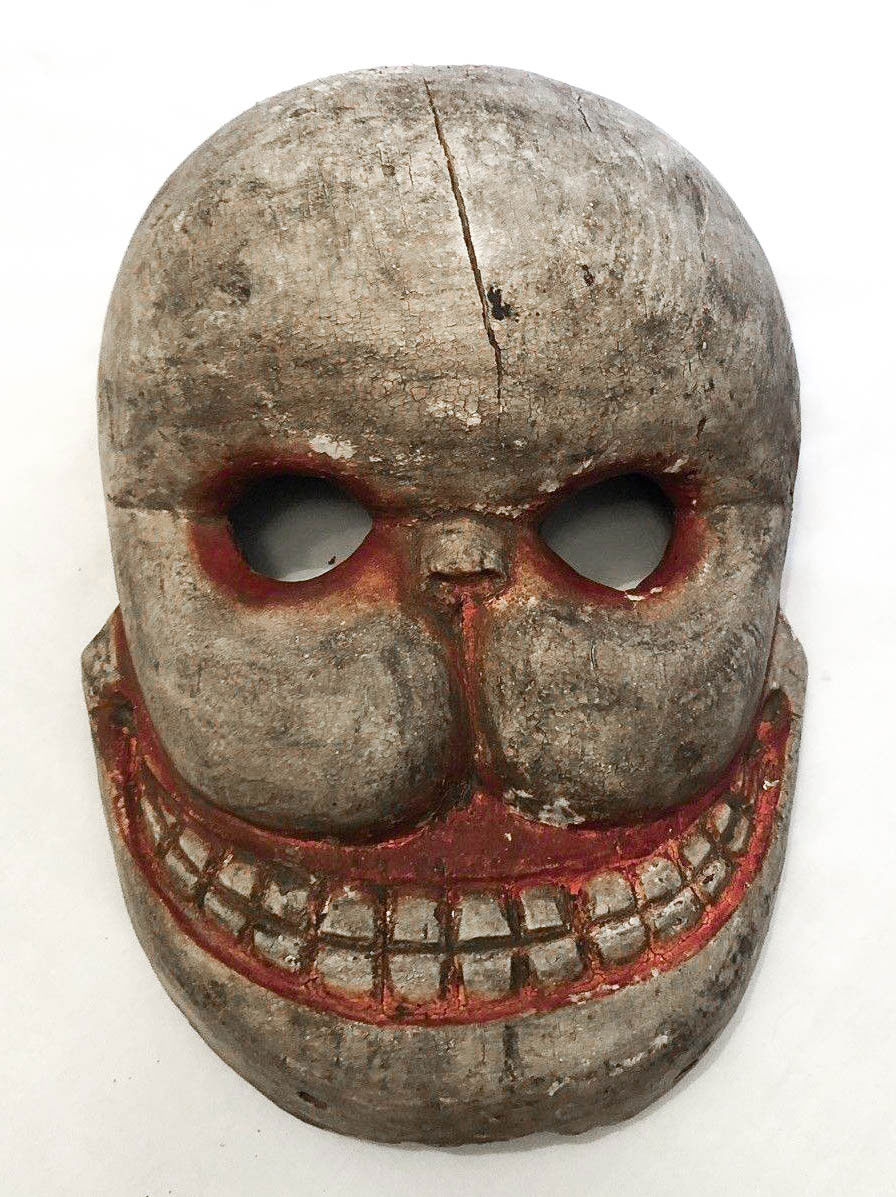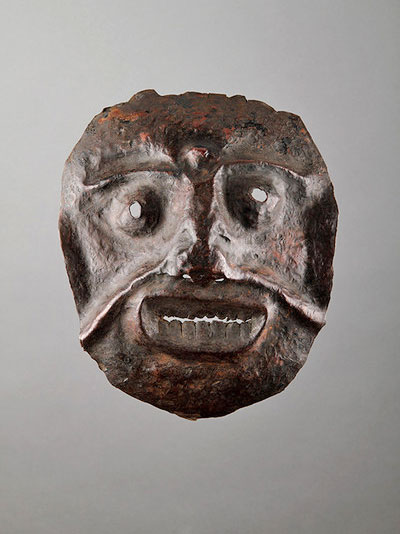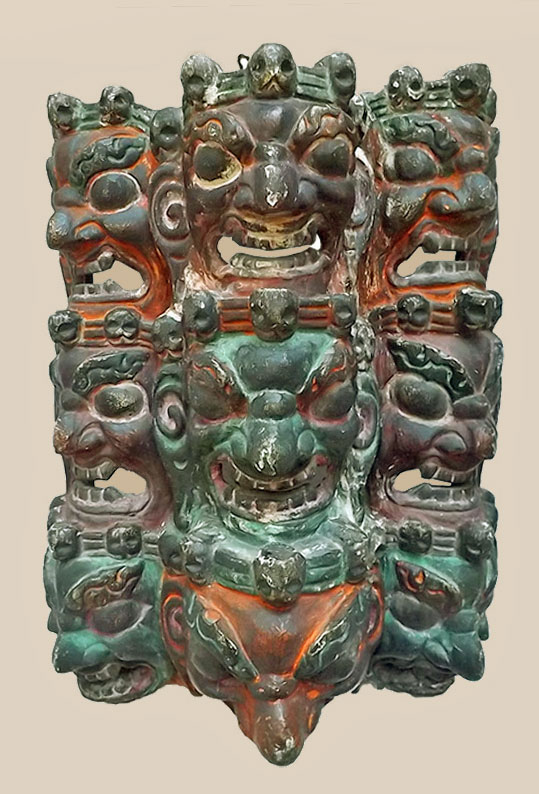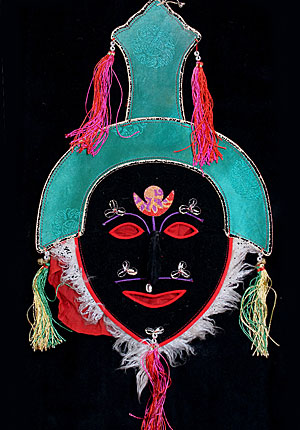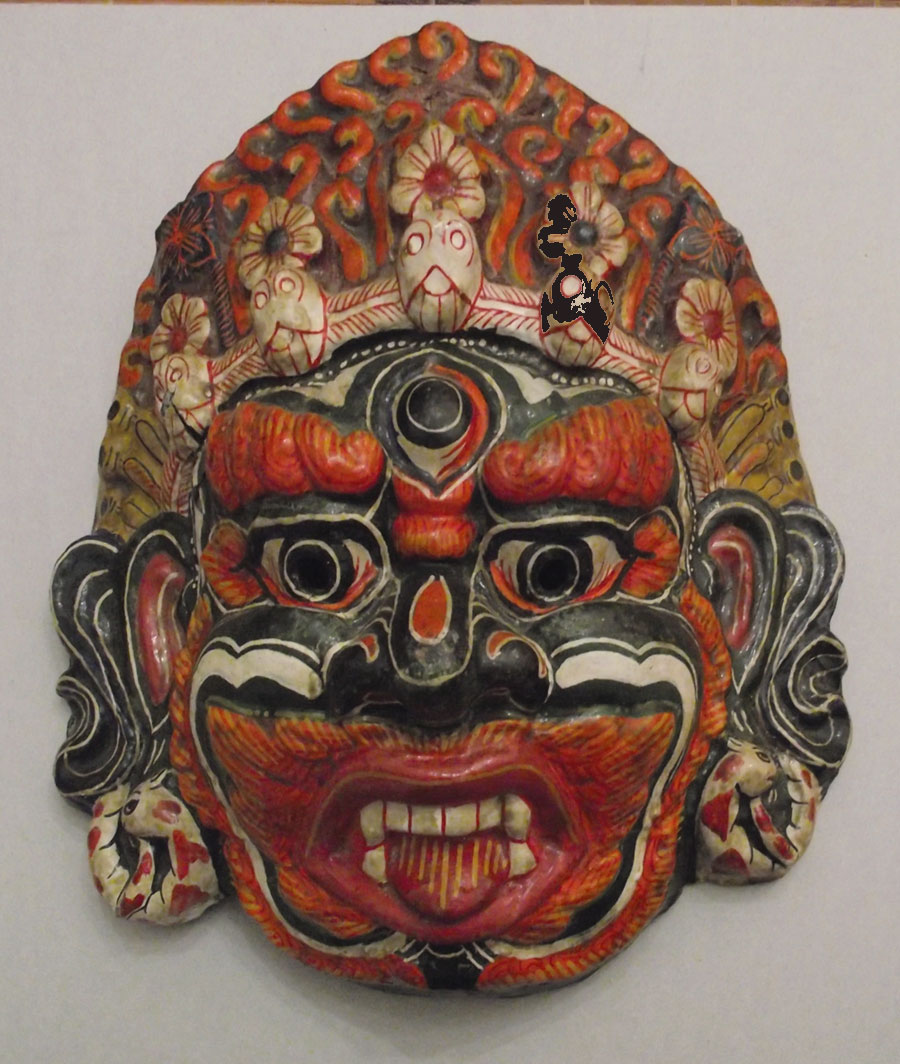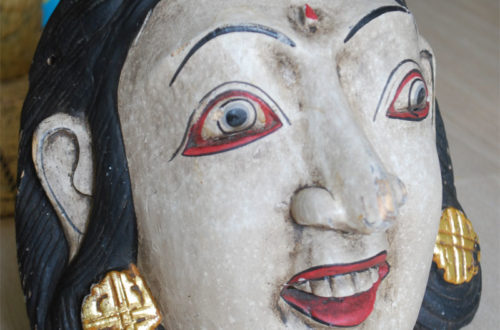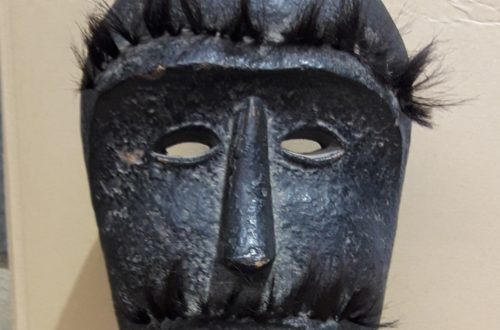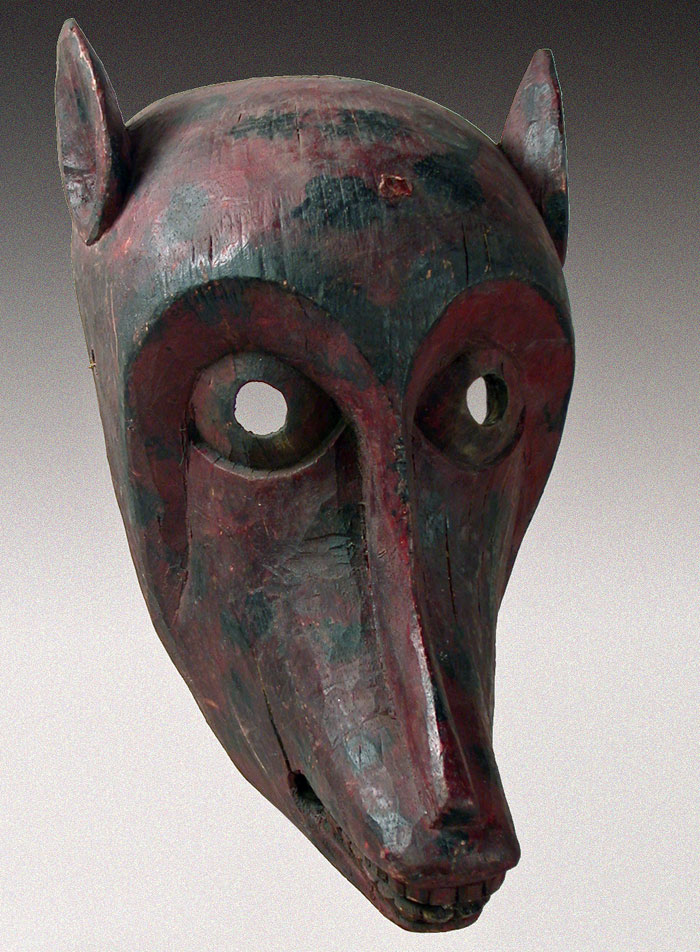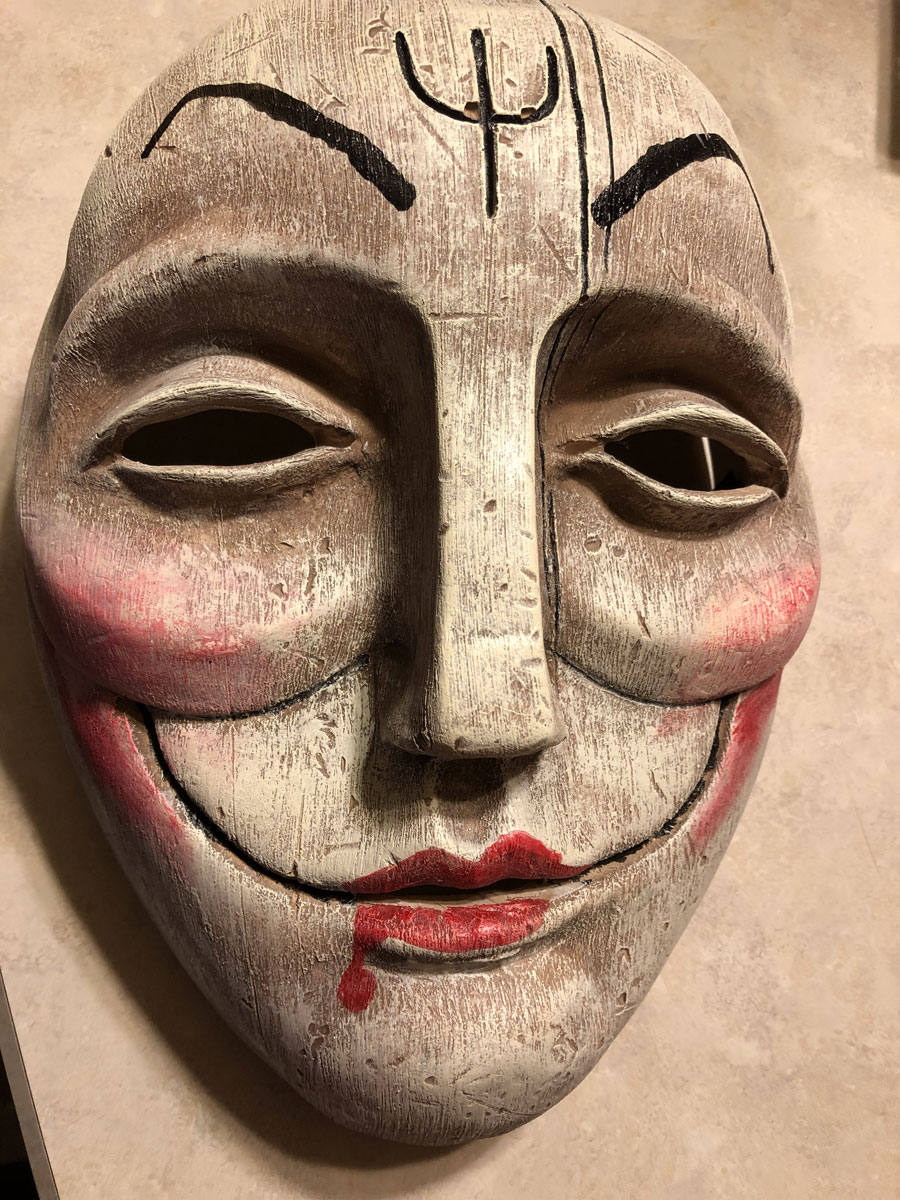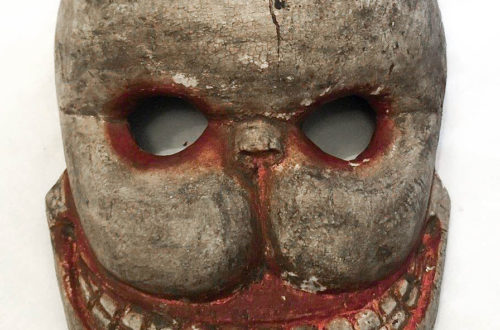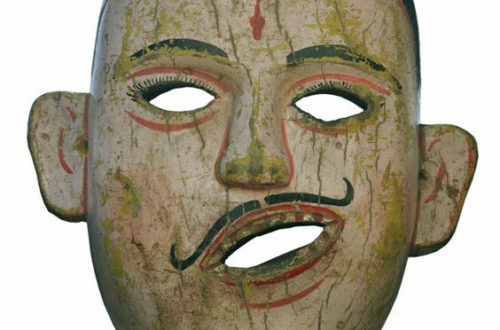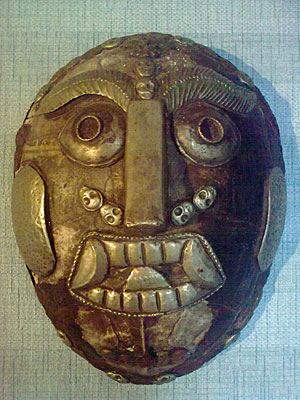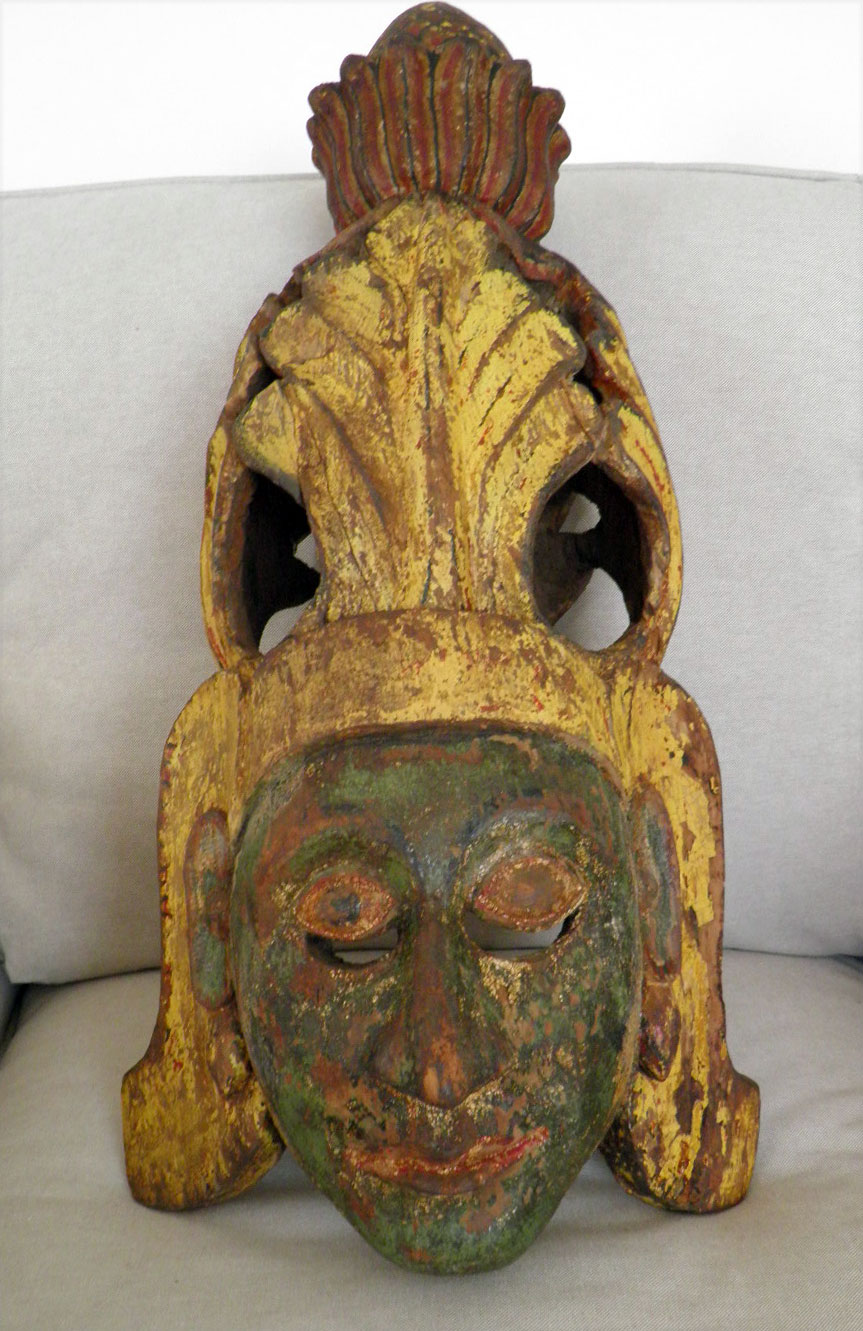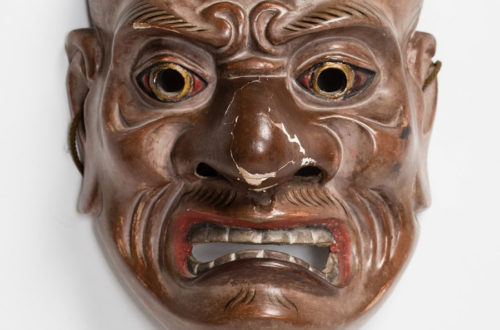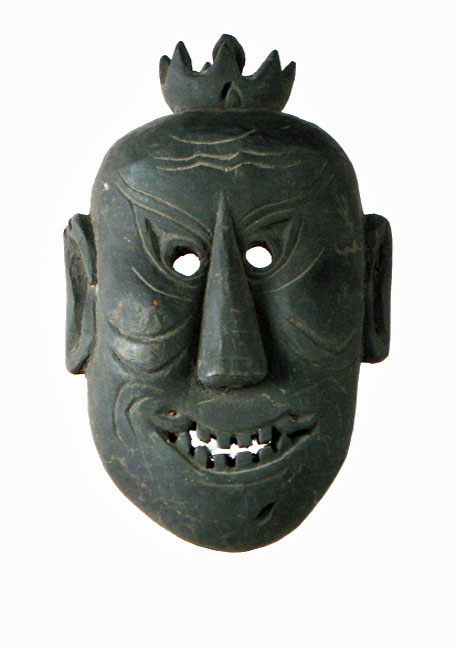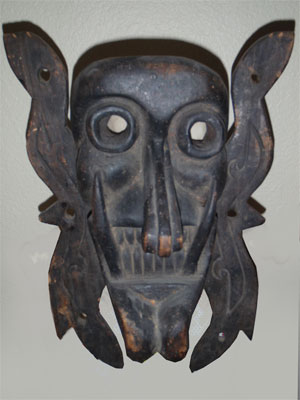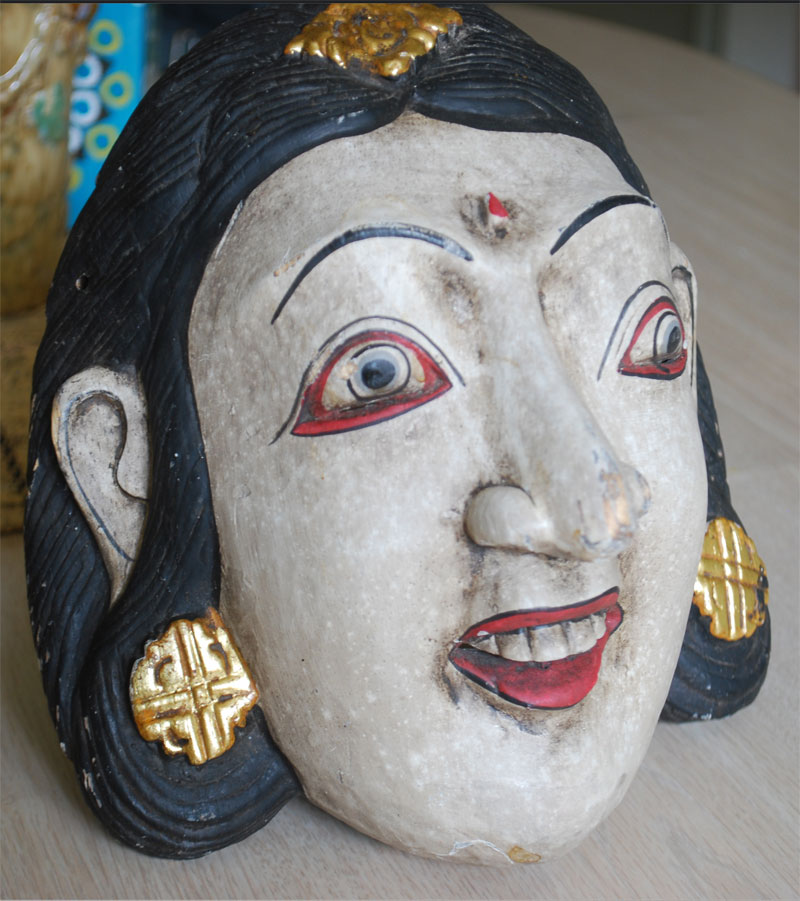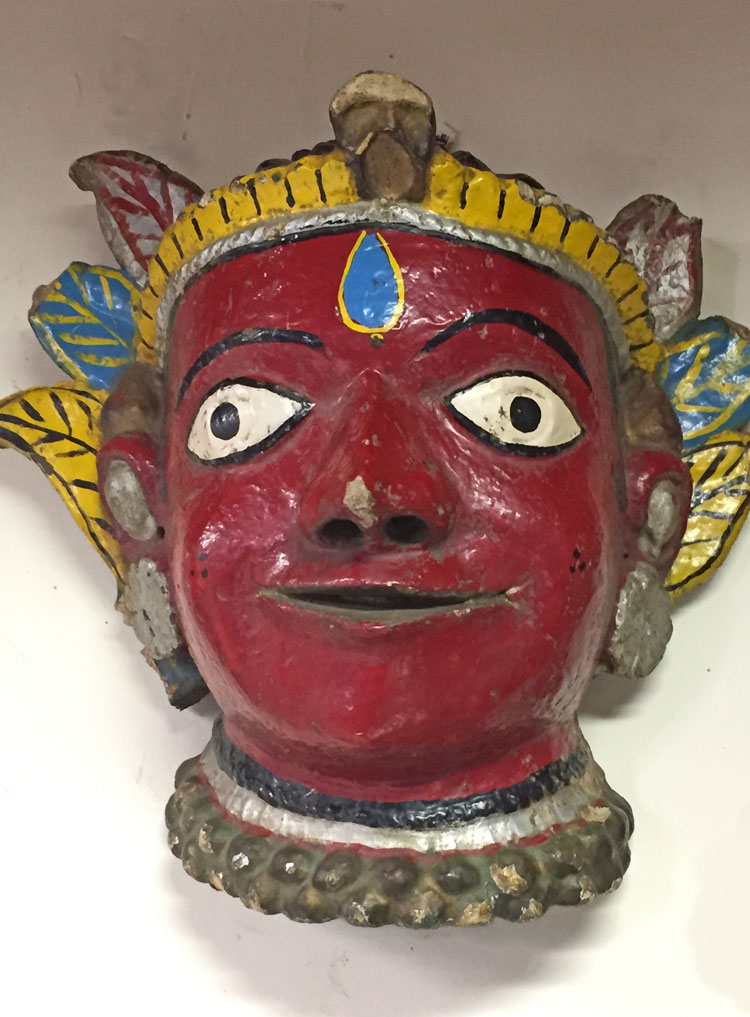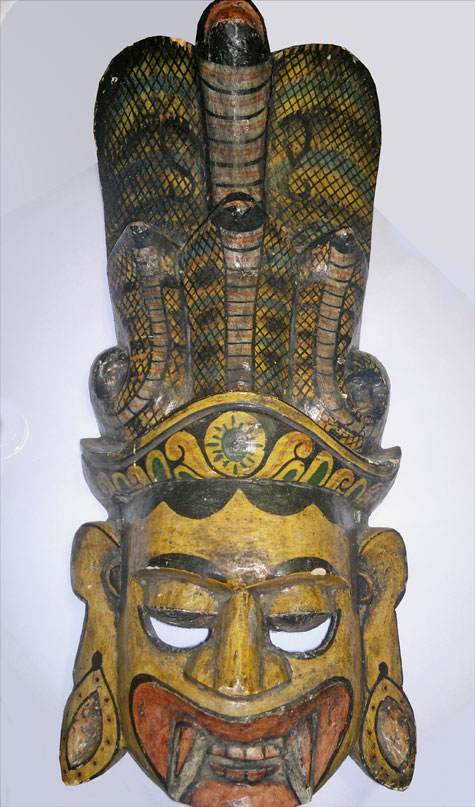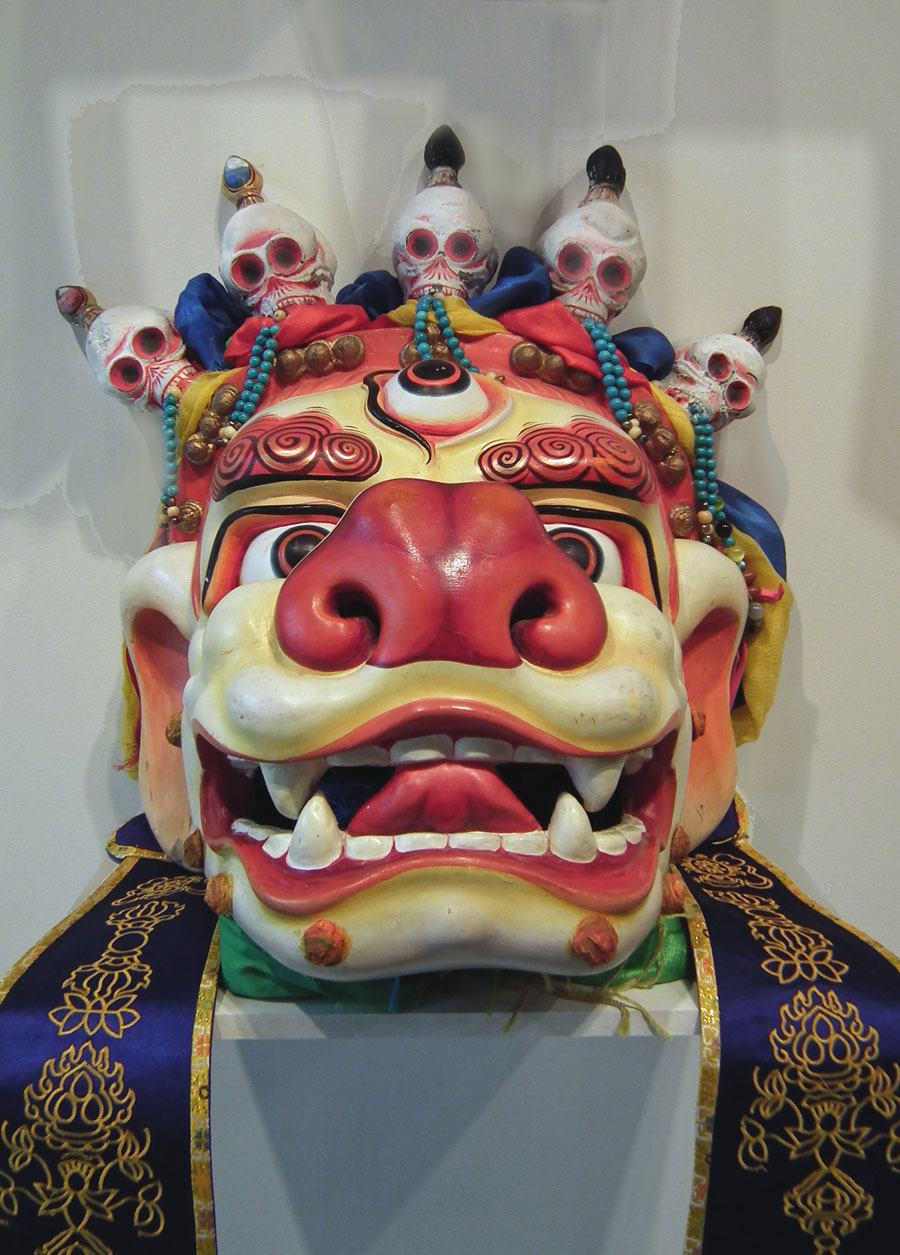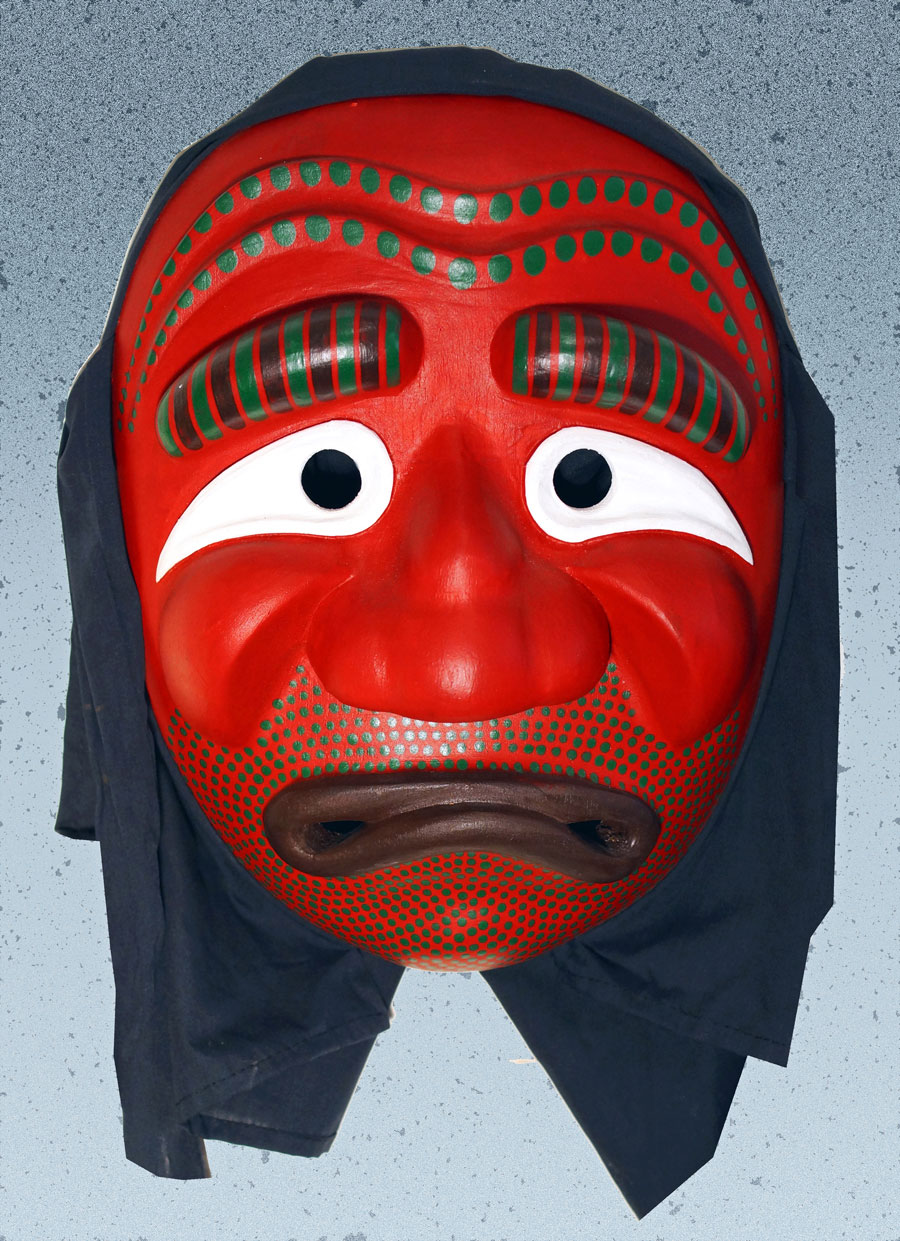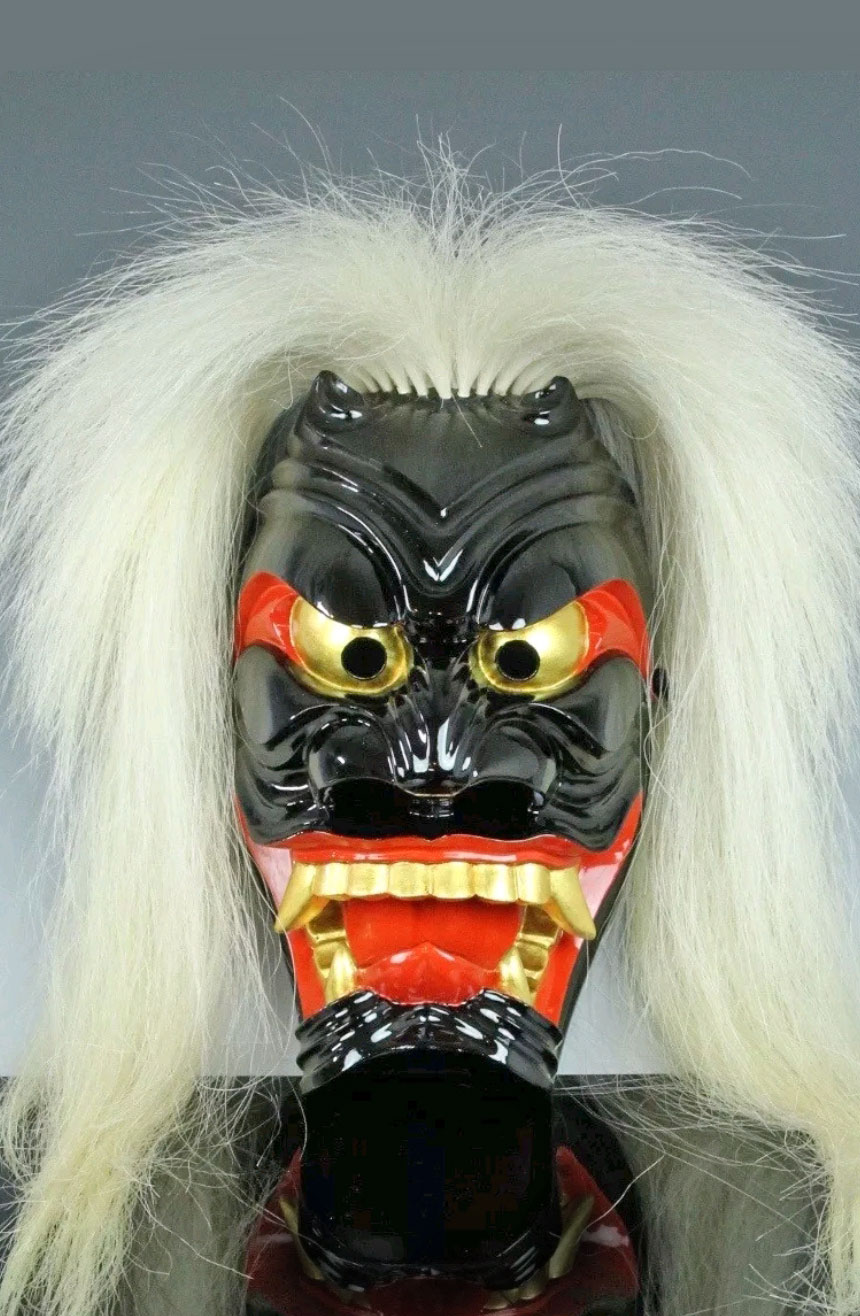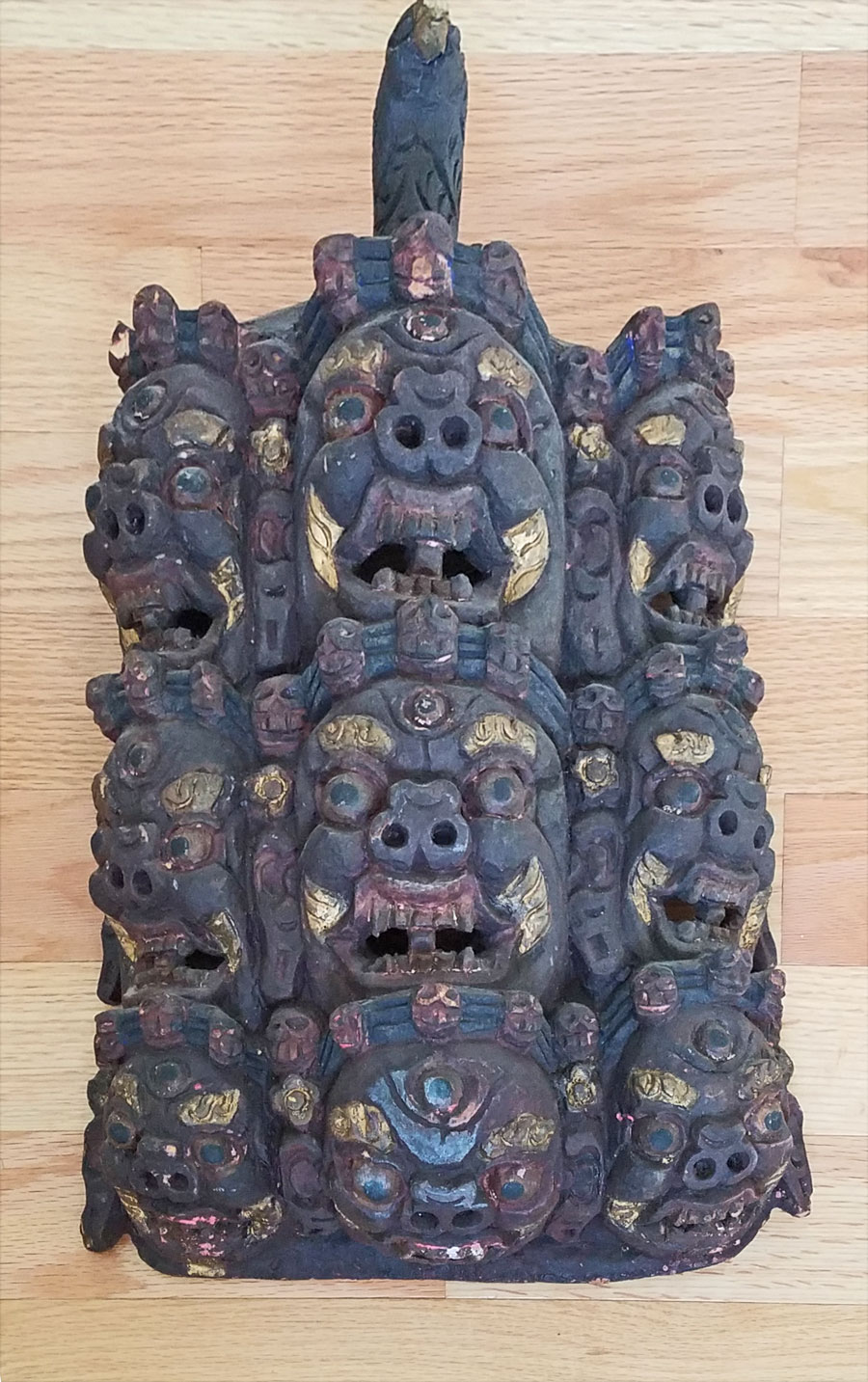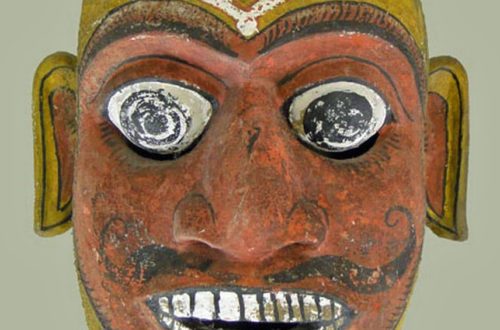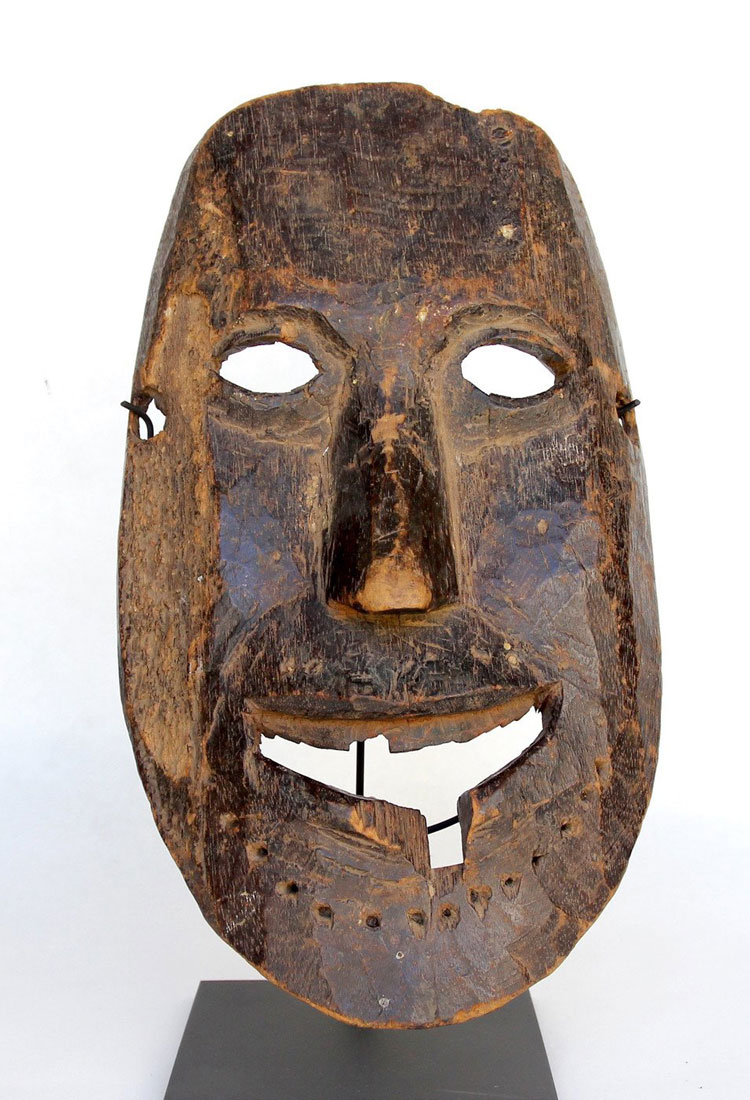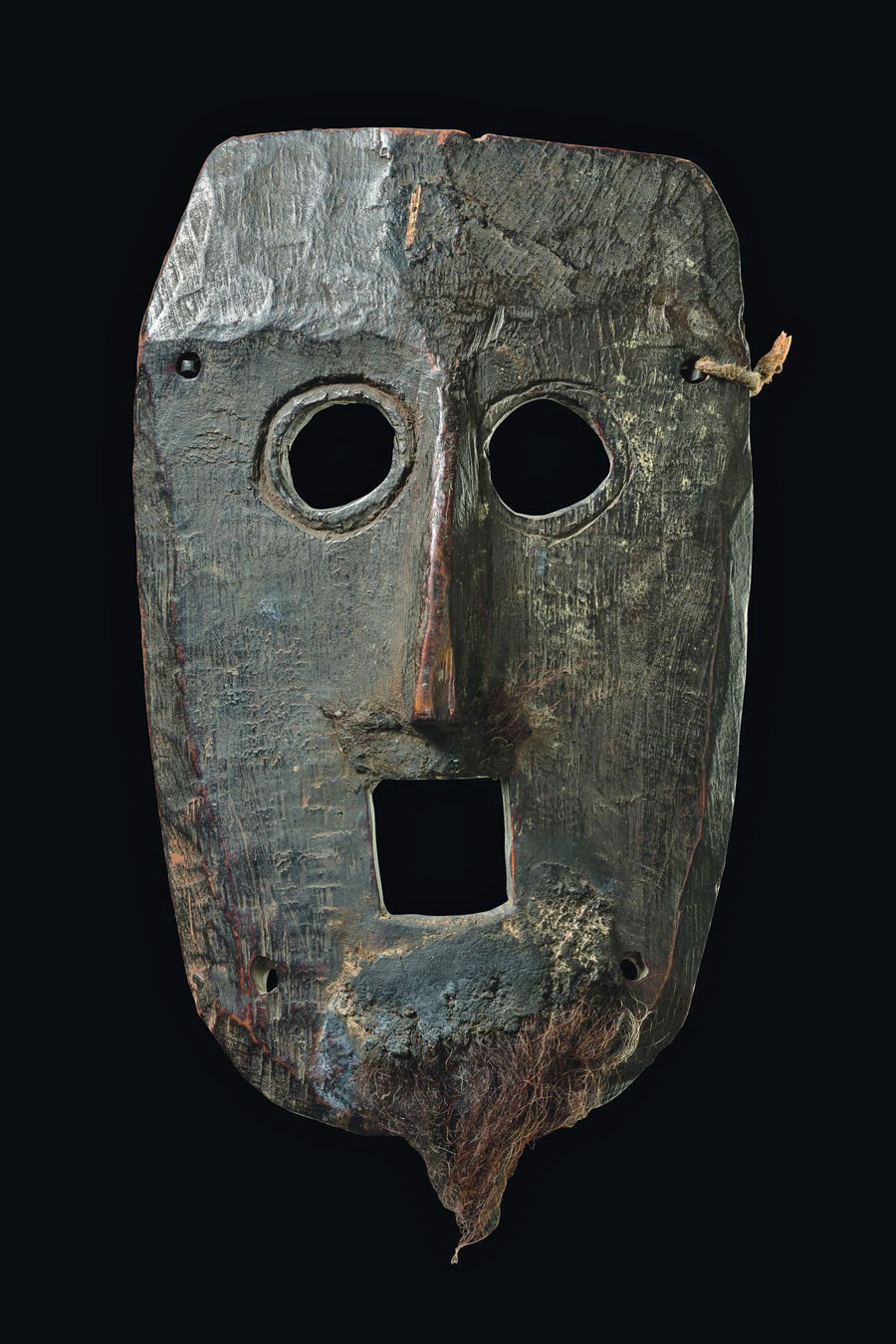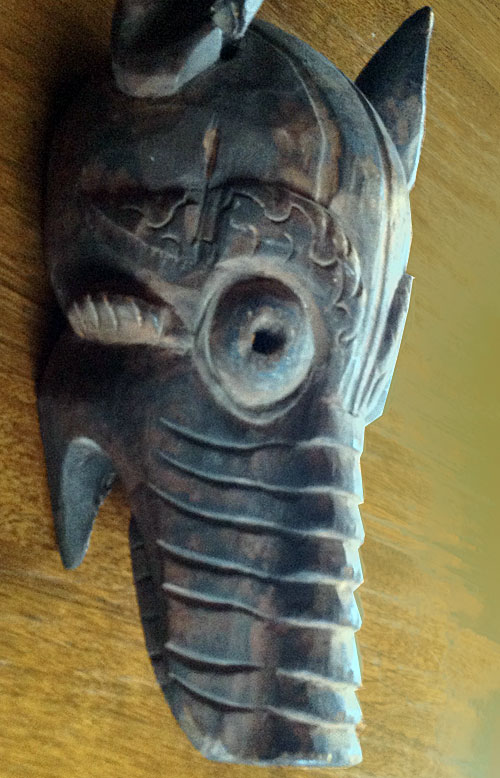Q: I posted this little Indian mask (20cm) because I think you would like it. It’s strange and deeply made of strong papier machè. I thought it was too little but I saw similar items being used during some festivals. On the rear is written India 1958 and this made me think it was original. If you can help me I’ll be grateful. Thanks, Monica 1519 A: I have seen papier mache masks of this character made in Nepal, but they were 14 inches, not 8 like this one. Nor did they have depth, thickness or cloth covering on the rear. Also, they were about 10 years old, not 60.…
-
-
Sri Lankan Maha Kola mask
Q: This Sri Lanka “mask” that, as I told you previously, is one of my favorites. At first, thinking it was a tourist item and I didn’t want to post it here. But after some internet research I decided to try as well because I never find another piece so colorful and careful made. I guess it could be vintage or made by an artist. Thank you again for your interest. 30 cm high and half-soft wood. She’s missing a piece on her hands. Monica, 1513 A: Sorry to take so long to post this. We seem to have corrected our computer problems. I’m glad you sent this. Even though…
-
Citipati (Ging) Mask From Tibet
I believe this is an older Ging mask per the following information I found on the net. “In the Himalayan Buddhist Cham dances 3 different levels of skull masks & skeleton costumes are used. The lowest level of skeleton dancers are the Ging, boy monks who dance in a basic costume and skull mask. They play a semi-comical character and have no skull diadem and no ear decorations– no adornments of any kind. This can be considered the entry-level of skeleton dancers.” Dan, 1498 A: Dan is a very serious collector and I am pleased he is sharing this with us. Study it carefully. This is authentic, old and used…
-
Nice Mahakala mask from Tibet
Q: I collect different items that I like. I started with african masks and continue with others. Here I would like to show one of the three masks that I prefer (guess they are from Nepal). They are made of strong papier mache. Monica, 1497 A: Mahakala is a tantric Buddhist deity of the Vajrayana tradition. He is one of the most important protector of dharma, and considered to be the wrathful and fierce emanation of Avalokiteshvara and Cakrasaṃvara. Mahakala is also worshiped by Hindus as an ultimate manifestation of Lord Shiva and consort of Kali (Maha-Kali) representing the destructive power of Brahman. The common element of the Mahakala mask…
-
Help identify a mask. India?
Q: Please identify. I need help if you can. Marion, 1493 A: I found this mask to be quite interesting. The material of construction is unrecognizable, none the less, it is well made and something that is authentic tribal art. Once I saw a heavy wood mask from southern India that looked much different but had the same pitchfork symbol on its forehead. Is the red character on the left rear a clue? Otherwise, this mask is a total mystery to me. Incidentally, Marion didn’t leave a correct email address so I could not ask her the usual what, where, when and how much. Please enlarge the photos and…
-
Old mask from India or Thailand?
Q: This mask has just been restored. It had suffered serious damage in storage. I would be interested to know its origin and its age. The conservator believes it is probably 17/18th century from Thailand, repainted red in the 19th century to bring it “up to date” with the craze for Indian artifacts at that time. John, 1478 A: The restoration expert did a good job and could be right about age and location. Please tell me who she/he is. Occasionally I’m asked for a recommendation. The mask is Hindu, but I can’t name the character or god. Also, it may be from India or Nepal… and the age is…
-
Kolam mask from Sri Lanka
Q: My wife and I own this mask that we believe comes from the Indian Ocean part of the world. It is made from a light weight wood, has some damage, but looks good on our shelf. Frederick, 1445 A: You are right about location. This is a reproduction of a Kolam mask from Sri Lanka, the largest island in the Indian Ocean.The Kolam drama has existed from 15th century, but some Sri Lanka legends said that this genre of drama has a history spanning more than 2500 years. Regarding the definition of the term Kolam, most reseachers have argued that the word has its origins in South India. The…
-
Mongolian Buddhist mask
Mongolia, once the second largest empire in the world, is north of both Tibet and China. So the prominent religion of Buddhism is shared with Tibet, and the Mahakala mask is also made for ceremony in Mongolia. This is a good example of the northern version of this famous mask. Can you tell the difference? It is very close, so I have archived this mask under both “East Asia” and “India & Himalayas.” Here is a little more history. Since time immemorial Mongolia has been occupied by tribes whose nomadic existence was dictated by the rugged topography and extreme climate of this vast region. More often fragmented than unified, these…
-
9 Mahakalas on 1 plaque
Q: Here are some pictures and info about a wood mask. I bought it at an estate sale in Maine a week ago. The mask is light in weight. Has a red wax seal on back. Mask measures 20 inches high X 13 inches width X 6 inches depth. Can you give me some info on it? Joel, 1396 A: This is a decorative wall hanging from Nepal. The use of Mahakala masks and the red wax seal tell us where it was made. The Indians south of Nepal use 10-headed masks of King Ravana for their Chau dances, but I’ve not heard of 9 Mahakalas. I believe this unusual…
-
Himalayan shaman’s mask
This Nepalese tribal mask is a crude version of a traditional Buddhist monk’s. A village shaman in the Middle Hills region of Nepal would have carved this hardwood by himself in order to perform healing, initiation and other rites. The underlying animist presence among shaman, which is clearly demonstrated here, is a significant contributing factor to the design of this mask. It shows evidence of having had much use, with a natural patina derived exclusively from being handled over many years. That’s animal hair glued to the chin. It is very old. The higher altitude of the Himalayan region greatly contributes to the preservation of wooden objects like this, whose…

